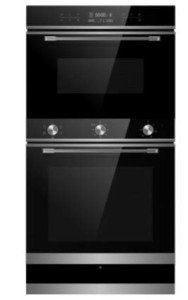20 Myths About Oven Built In: Debunked

The Rise of Built-In Ovens: A Seamless Approach to Modern Cooking
In contemporary kitchen areas, where style aesthetic appeals blend perfectly with functionality, one home appliance stands apart as a real video game changer: the built-in oven. As house owners and chefs alike continue to look for ingenious services that improve their cooking experience, built-in ovens have become increasingly popular. This article checks out the benefits, factors to consider, and trends surrounding built-in ovens, highlighting why they are an important feature in modern-day cooking spaces.
What is a Built-In Oven?
A built-in oven is a kitchen appliance designed to be integrated into the cabinetry of a kitchen area rather than standing alone. Unlike conventional freestanding ovens, which can be moved and placed anywhere, built-in ovens can be found in various styles and sizes to fit specifically within designated areas. Offered in single or double configurations, these ovens provide a structured look that complements modern-day cooking area designs.
Advantages of Built-In Ovens
1. Space-Saving Design
One of the most enticing benefits of built-in ovens is their space-saving style. By incorporating the oven into cabinets, you can release up valuable counter and flooring space. This is particularly advantageous in smaller sized kitchens, where optimizing space is necessary. Built-in ovens can be installed at eye level, making them more accessible and lowering the requirement to bend down.
2. Visual Appeal
Built-in ovens add to a smooth and cohesive kitchen area design. Available in various finishes-- such as stainless-steel, black, white, and custom-made cabinets-- they can mix seamlessly into the total design. This visual appeal enhances the kitchen's visual harmony and elevates the area, developing a modern and sophisticated environment.
3. Enhanced Functionality
Many built-in ovens come geared up with innovative cooking technologies, such as convection cooking, steam ovens, and smart functions. These enhancements permit flexible cooking options, making it much easier to accomplish professional-level results at home. Smart built-in ovens can even connect to Wi-Fi, enabling users to control the oven from another location, receive alerts, and gain access to a range of cooking programs and recipes.
4. Enhanced Ventilation
Due to the fact that built-in ovens can be integrated with cooking area hoods and ventilation systems, they can help keep much better air quality and lower cooking odors. This is especially substantial for those who enjoy to cook with fragrant spices and components, as an effective ventilation system can keep the kitchen area comfortable and welcoming.
5. Customization Options
Built-in ovens offer a broad range of personalization options to fit individual cooking designs and needs. From professional-grade home appliances with numerous cooking modes to compact designs for smaller sized kitchens, house owners can choose the oven that fits their particular requirements. Lots of manufacturers likewise use customizable front panels, enabling you to match the oven's appearance to your kitchen cabinetry for a genuinely unified look.
Factors to consider When Choosing a Built-In Oven
While built-in ovens have many benefits, there are very important factors to consider to bear in mind before making a purchase:
1. Price
Built-in ovens typically come with a higher cost than their freestanding counterparts due to their style and setup requirements. It's important to factor in both the expense of the oven and any additional expenditures connected to kitchen cabinetry modifications or installation.
2. Setup Requirements

Installing a built-in oven often requires professional support, particularly if you need to modify existing cabinets. integrated ovens that you consider any expenses associated with setup, including labor and prospective kitchen cabinetry changes.
3. Size and Dimensions
Before buying a built-in oven, measure the designated space properly to guarantee an appropriate fit. Built-in ovens can be found in different sizes and setups, so picking one that aligns with your requirements and kitchen style is important.
4. Way of life and Usage
Consider your cooking habits and requires when picking a built-in oven. If you regularly host large gatherings, a double oven may be more helpful. On the other hand, if you have a compact cooking area, a single-wall oven may suffice.
Trends in Built-In Ovens
The cooking area appliance market is continuously evolving, and built-in ovens are not exempt from emerging patterns. Some present patterns consist of:
Smart Technology Integration: With the rise of clever home innovation, built-in ovens now frequently include connection alternatives. This permits users to keep an eye on cooking development and adjust settings through mobile apps.
Energy Efficiency: As sustainability ends up being a priority, many producers are buying energy-efficient built-in ovens that reduce energy intake while preserving performance.
Multi-functional Designs: Built-in ovens now provide functions such as air frying, sluggish cooking, and steaming, providing flexibility that satisfies a large range of cooking techniques.
Conclusion
Built-in ovens certainly represent a perfect mix of style, function, and convenience in today's kitchens. As more house owners go with this modern solution, the focus shifts to creating a cooking space that is as aesthetically pleasing as it is useful. Whether you are building a new home or redesigning your kitchen area, considering a built-in oven might elevate your culinary experience and transform your kitchen into a stylish and functional haven. With a variety of choices offered and ongoing developments in technology, built-in ovens stay a standout option for both newbie cooks and cooking enthusiasts alike.
